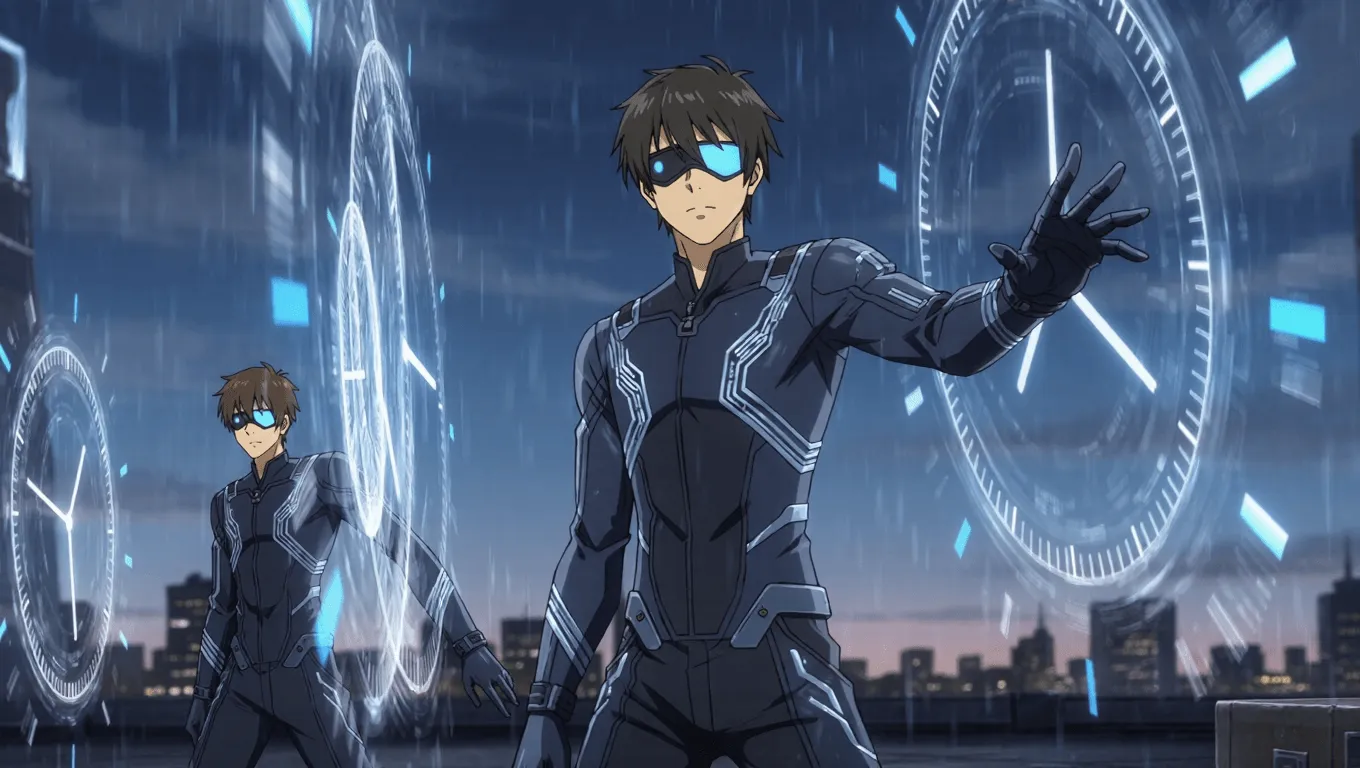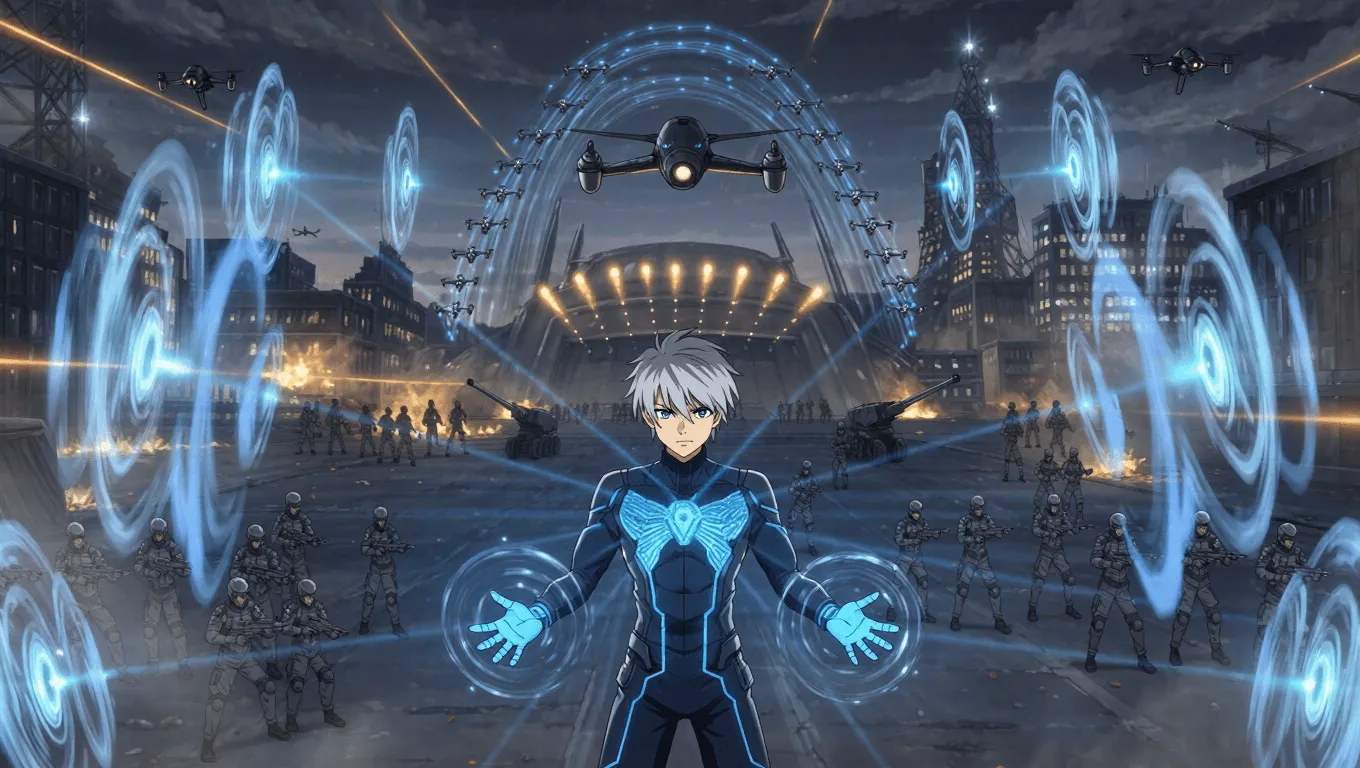Chrono Synchrony

Chrono Synchrony Video Demo 🎬
Table of Contents
Chrono Synchrony is the refined art of aligning a person’s actions, senses, and even physiology with the rhythm of the timestream. Instead of brute-force time manipulation, this power focuses on timing—creating perfect simultaneity, tightening the gap between cause and effect, and harmonizing allies through temporal resonance. In plain terms, Chrono Synchrony lets a user act at the exact right moment, over and over. For a broader look at related abilities, see the evolving entries in the superpower wiki, or discover fresh concepts with the random superpower generator.
What Is Chrono Synchrony
Chrono Synchrony is a precision-based form of chronokinesis that emphasizes synchronization rather than complete time travel. The user does not rewrite history. Instead, they tune themselves (and sometimes others) to the “beat” of events already in motion. This tuning can compress or expand perceived intervals (micro time dilation), lock multiple teammates into the same reaction window (temporal alignment), and phase actions so they land at an opportune instant (perfect strike timing). Because the power deals in alignment over alteration, paradox risks are reduced, but not eliminated.
Key concepts include:
-
Temporal alignment: Matching one’s internal clock to an external process—an opponent’s breathing, a ticking mechanism, or a cascade of unfolding events.
-
Resonant timing: Entering a harmonic relationship with the timestream to minimize lag, enabling precise counters, predictive parries, and coordinated bursts.
-
Synchronization fields: Extending the effect outward, allowing a squad to share the same reaction window for near-simultaneous action.
-
Anchors and markers: Establishing a temporal anchor to resist desynchronizing effects; placing a marker to “snap back” a few seconds (a controlled micro-rewind) if things go wrong.
Core Abilities of Chrono Synchrony
Temporal Alignment (Self)
The baseline skill is aligning the user’s heartbeat, breath, and neural firing with external rhythms. This grants heightened timing, cleaner execution, and consistent clutch plays—think accurate counters, frame-perfect parries, and flawless dodges.
Synchronization Field (Team)
The user projects a low-intensity chronal resonance that lets allies share a unified reaction window. Attacks land together, reloads complete in sync, and evasions happen as one. This feels like a shared tempo rather than raw speed.
Micro Time Dilation
Rather than stopping time, the user creates a localized bubble that subtly stretches or compresses subjective time for a beat or two. It’s enough to step between punches, thread a needle through a laser grid, or finish a complex gesture under pressure.
Resonant Recall (Snap-Back)
By laying a temporal marker, the user can revert themselves (and sometimes a small area) a second or two to a safer state. It’s not full rewinding—wounds aren’t undone beyond the marker’s window—but it cancels a mistimed action and restores optimal positioning.
Predictive Parry
Synchrony improves prediction without true precognition. By aligning to opponents’ micro-signals—weight transfer, muscle priming, breath cadence—the user blocks or counters at the exact frame where probability peaks.
Causality Tuning
This reduces the “latency” between an act and its effect. Tools prime faster, doors open on the earliest permissible frame, and commands trigger with minimal delay. It makes complex sequences feel frictionless.
Temporal Anchor
A personal metronome inside the field resists desynchronizing phenomena—chaos bursts, probability shakes, or enemy time jammers. Anchors also let the user maintain a steady beat for allies to fall back on when fights get noisy.
Phase-Lag Echoes
Rapid micro-adjustments leave harmless afterimages—brief time echoes that confuse targeting systems and fast opponents. These are not clones; they’re perceptual smears formed by subsecond misalignment.
Application / Tactical Advantages in Combat
-
Perfect windows: Chrono Synchrony shines when the battle has “beats”—reloads, blink teleports, shield cooldowns. The user turns these beats into guaranteed openings.
-
Team bursting: A synchronized field stacks damage by causing weapons, abilities, and finishers to land in the same damage frame, overwhelming defenses that rely on staggered mitigation.
-
Speedster counterplay: Rather than matching raw velocity, the user times pre-committed paths, forcing a speedster to meet a block at the only frame they’re vulnerable.
-
Teleport intercepts: By watching the pre-blink tells (particle shear, energy whine), the user places traps or slashes into the arrival frame.
-
Rescue timing: Snap-back markers undo missteps around hostages, disarming sequences, or bomb defusals—critical when a single mistimed action would be catastrophic.
-
Environmental orchestration: Doors slide, lights flicker, mechanisms cycle—the user syncs with them to move undetected, pass hazards, or trigger chain reactions on cue.
-
Morale and rhythm: Squads that move on a shared beat keep calmer and make fewer errors. The psychological edge is real.
Outside combat, Chrono Synchrony enables precision sports feats, conductor-level performance, millisecond engineering tasks, and disaster-response coordination across teams and drones.
Level
Level 1 🏙️

-
Scope: Self-focused alignment with short-range influence (one ally at a time).
-
Effects: Predictive parry, basic micro time dilation (~0.5–1.5 seconds subjective edge), and single-use resonant recall (1–2 seconds).
-
Use cases: Dueling, high-stakes disarms, clutch dodges, parkour under pressure.
-
Tell: Subtle rhythmic tapping, breath control, and tight movement economy.
Level 2 🌇

-
Scope: Small-team synchronization (room or street block).
-
Effects: Stable synchronization field for 3–5 allies, multi-marker recall points (up to ~5 seconds total across markers), reliable phase-lag echoes, improved causality tuning on tools and vehicles.
-
Use cases: Breach-and-clear operations, heist timing, coordinated boss-phase bursts, intercepting teleports, thwarting speed blitzes with traps.
-
Tell: A faint “metronome” hum in gear, coordinated footfalls, and attacks that audibly land together.
Level 3 🌃

-
Scope: Battlefield-scale harmonization with layered anchors.
-
Effects: Overlapping fields that guide squads across city blocks, cascading timing windows that line up artillery, drones, and ground teams, and robust resistance to enemy time interference.
-
Use cases: Multi-front operations, synchronized evacuations, large-scale raids, planetary landing windows.
-
Risks: Cognitive overload, paradox stress when interacting with other time powers, and collateral “temporal fatigue” in allies if maintained too long.
Limitations of Using the Chrono Synchrony
-
No absolute time stop or full rewrites: The power works with existing events and legal frames; it aligns rather than deletes.
-
Cognitive and metabolic cost: Running a field demands intense focus. Users report headaches, tremors, and sleep-cycle drift after extended use.
-
Anchor dependence: Without a solid temporal anchor, external disruption (entropy surges, probability spikes) can desynchronize the field.
-
Short recall windows: Resonant recall is measured in seconds, not minutes. It’s a safety net, not a redo button.
-
Line-of-sight and signal quality: Synchronization is stronger when the user can perceive reliable beats—breath, footsteps, mechanism cycles. Obscured or chaotic environments degrade performance.
-
Diminishing returns vs. brute force: Against raw, overwhelming power (planet-level blasts, reality edits), perfect timing may help evade—but won’t neutralize—the threat.
-
Emotional interference: Anxiety and rage introduce jitter into the user’s inner metronome. Training focuses heavily on calm cadence.
Weakness Against What Other Superpowers
-
Entropy and decay control: Powers that accelerate entropy inject noise into the beat, scattering synchronization and shortening recall windows.
-
Chaos or probability manipulation: Randomized outcomes erase predictable frames, undermining predictive parries and timed ambushes.
-
Absolute time stop: If another power truly halts time, Chrono Synchrony cannot create action frames inside that stoppage.
-
Temporal jamming: Anti-chronal fields, time storms, or resonance scramblers desync anchors, causing allies to fall out of the shared beat.
-
Perception scrambling: Illusioncasters and neuro-hackers distort the micro-signals (breath, gait) that synchrony relies on, faking beats and baiting premature moves.
-
Space-warping on arrival: Teleporters who add post-arrival phase shifts or randomized offsets reduce intercept reliability.
-
Sound disruption: Sonic interference near the user’s anchor can smear timing cues, especially at Level 1 and 2.
Synergistic Power Combos
-
Superspeed (calibrated velocity): Synchrony shapes a speedster’s sprint into precise intervals, converting raw speed into surgical strikes.
-
Teleportation (arrival choreography): Pre-set windows let teleporters chain hops so a team appears and acts in one fluid beat.
-
Precognition (branch pruning): A precog surfaces likely branches while synchrony locks in the best execution frame for that branch.
-
Gravity control (relativistic edges): Minor relativistic time dilation from gravity wells stacks with synchrony for stronger slow/fast moments around key objectives.
-
Technopathy/data foresight: Real-time analytics feed rhythm metrics (reload timers, actuator cycles) into the synchrony field for tighter coordination.
-
Shielding/healing: Timed barriers and on-beat heals reduce downtime, chaining survivability with momentum.
Known Users
-
Maestro Meridian: A strategist who conducts squads like orchestras, laying markers for safe retreats between phases.
-
Second-Hand Tasha: A street vigilante who treats every alley fight like a drumline, parrying on the upbeat and striking on the downbeat.
-
Kairo the Metronome: A courier famed for threading city traffic at rush hour, syncing with light cycles and drone patrol sweeps.
-
Barry Allen (The Flash): While renowned chiefly for speed, certain storylines showcase meticulous timing and event synchronization that mirror the principles of Chrono Synchrony. Learn more about The Flash (Barry Allen).
For readers mapping this ability against other talents—from classic time manipulation to specialized “tempo” gifts—browse the broader catalog in the superpower wiki. Or let inspiration strike at random with the superpower generator, and see which abilities harmonize best with Chrono Synchrony.
